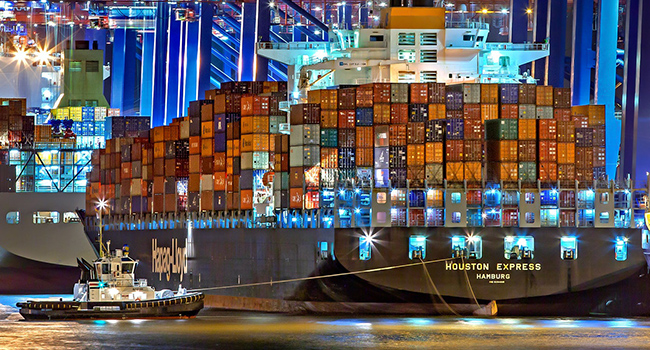 Canada relies on exports. In any given year, about 45 per cent of our economy is in foreign trade.
Canada relies on exports. In any given year, about 45 per cent of our economy is in foreign trade.
For much of the past, our exports have been mainly in the agriculture and resources sectors. These are still important, but services (think international education), manufactured goods (e.g. Lululemon clothing) and technology (e.g. the Canadarm robotic arm) are gaining on the traditional products we sell.
You would think a country so highly reliant on exports would be selling to many nations. Alas, that’s not so for Canada. About 75 per cent of our exports go to the United States. The next largest importer of Canadian goods is the European Union, taking eight per cent – a very big step down. The third is China at five per cent.
Trade with the EU is good and should be growing under the Comprehensive Economic and Trade Agreement (CETA). The deal eliminated almost all the tariffs between Canada and EU member states.
But this still leaves us very heavily dependent on two of our top three customers: the U.S. and China. And both of these are increasingly hostile.
President Donald Trump has become more and more protectionist, under the delusion that curtailing imports into the States will help the American economy. He persists in his anti-trade measures even though they often increase the cost of living for Americans and encourage businesses to operate outside the U.S. in order to have more assured access to supplies and world markets.
Even the recently-negotiated U.S.-Mexico-Canada Agreement (USMCA) doesn’t guarantee access to the American market for Canadian suppliers. The prospect of tariffs on Canadian aluminum arose before the ink on the USMCA was dry. Some Americans have noted that this could increase the cost of beer cans and hence of beer.
China is an autocratic country that’s not constrained by internal or external laws or agreements. Its self-defined political interests outweigh all other factors. That leads to frequent, sudden and arbitrary changes that harm those who thought they were operating under known and stable conditions. The Chinese ban on Canadian canola is one example, although they’ve been happy to keep buying Canadian barley to keep Chinese beer drinkers supplied.
Here are some things Canada can do to diversify our export markets, expand our customer base and strengthen our very open economy. The first two involve jumping into the alphabet soup of international trade agreements.
Change USMCA to CUSMA
In other words, put Canada first. Remember that Americans feel that every other country, including Canada, is ripping them off trade-wise. They don’t see win/win solutions for all.
It’s up to Canada’s negotiators and trade attachés to look after Canada’s interests at all times and to demonstrate to Americans when freer trade benefits us all. We should be spreading the word in the U.S. that aluminum tariffs could make beer more expensive.
Remember CPTPP
The Comprehensive and Progressive Agreement for Trans-Pacific Partnership (CPTPP or just TPP) is a free-trade agreement that links countries containing almost 500 million consumers and 13.5 per cent of world output. The membership includes Australia, Brunei, Canada, Chile, Japan, Malaysia, Mexico, New Zealand, Peru, Singapore and Vietnam.
The United States was involved but withdrew. China is also noted for its absence.
The United Kingdom plans to join, which would mean members have access to 16 per cent of world markets.
TPP and its member nations are stable and reliable potential markets for our traditional and more recent exports. Many Canadians have origins in these countries and can provide valuable business links.
Dealing with Mexico could well be easier under TPP than under CUSMA, since the United States wouldn’t have to be involved.
Free trade within Canada
Canada is a federation but sometimes we let federalism get in our way. Canada produces seven per cent of the world output, making us a noteworthy middle power.
However, there are situations where far from being a unified significant nation, we turn into a jigsaw puzzle of 10 provinces and three territories. The hodgepodge of rules and requirements can sometimes make it easier to do business across international borders than across provincial ones.
Only the federal government has the muscle to do away with the barriers that limit the flow of goods, services and professionals among provinces and territories. They need not autocratically and arbitrarily make up new national rules and impose them. Instead, they can follow the method used in Europe when the nations there became one market.
The European Union government told the countries they had until a fixed date to work out mutually accepted standards that all could live with. If they hadn’t reached harmony and uniformity by then, rules would be imposed that might not be to anyone’s liking.
Free trade within the country and a more diversified global customer base will go a long way to enabling Canada to thrive in these challenging times.
Troy Media columnist Roslyn Kunin is a consulting economist and speaker.
The views, opinions and positions expressed by columnists and contributors are the author’s alone. They do not inherently or expressly reflect the views, opinions and/or positions of our publication.


